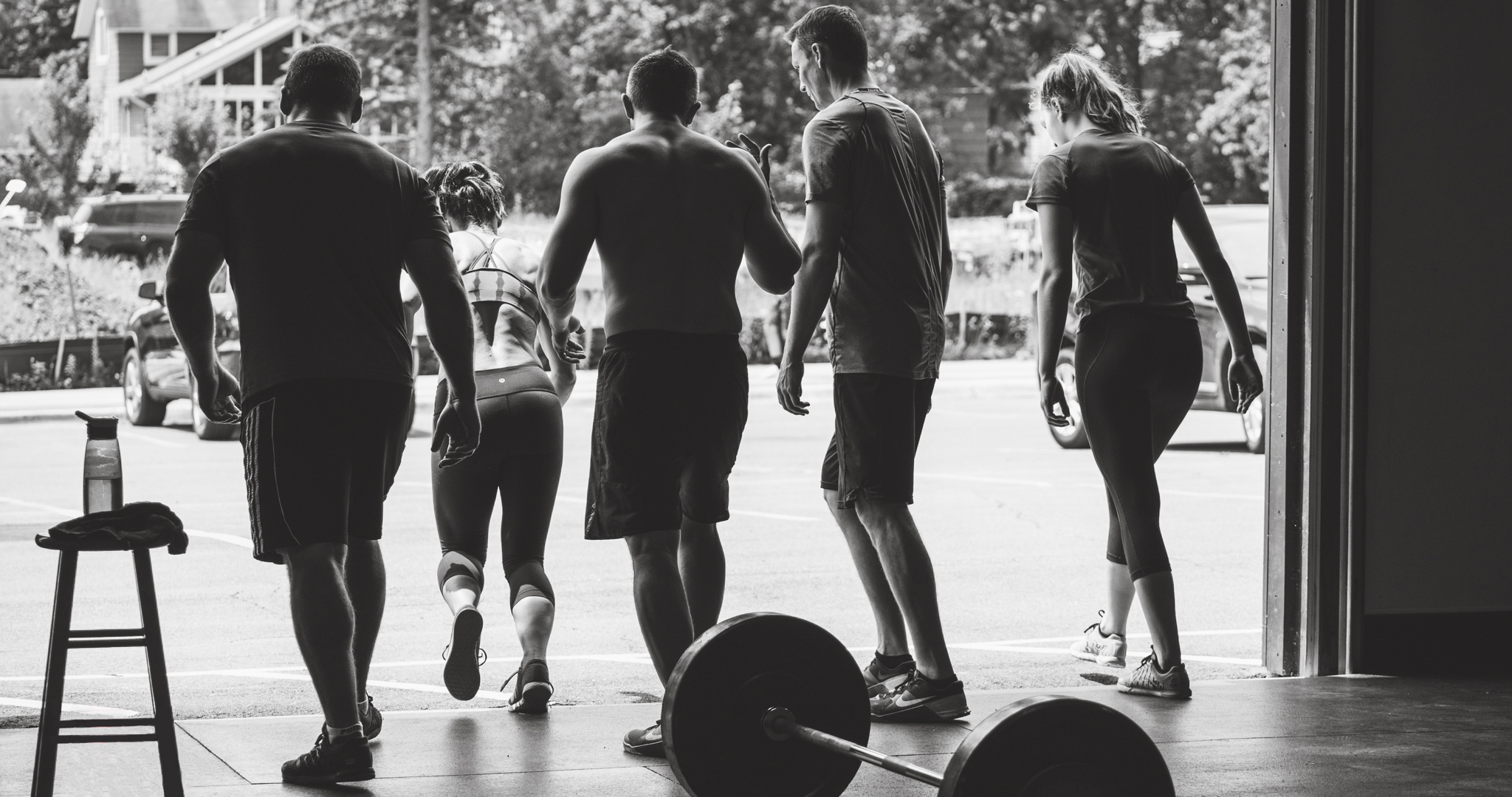Invest in Lifelong Fitness
Part of ‘adulting’ is being prepared (as much as possible) for all of life’s eventualities – kids, college, house upkeep, retirement, health emergencies, etc. Taking steps to be ready for events that may happen years in the future are just standard for most of us, but while we are proactive in planning for so many life events, we often just accept that our bodies will slow down as we age. But guess what? We can be just as proactive in regards to the aging process! Every day that you come to class and move, lift, run, and train is another day you’re investing in your long-term physical health and vitality.
CrossFit is defined as constantly varied functional movements performed at high intensity and said that it prepares you for the unknown and unknowable. It is undeniable that life is constantly varied and certainly full of the unknown and unknowable. So while we prepare in so many other ways for everything that we may encounter in life, let’s do the same with our fitness and physical capacity. Don’t plan for decrepitude; plan now for a long, healthy, active life.
Excerpts from “You Don’t Have to be Old and Broken”, CrossFit Journal article, published October 22, 2018. Written by Lon Kilgore.
The stereotypical media portrayal of aging is a person who complains of joint pain, demonstrates a restricted range of motion and moves with a slow, unsteady gait.
A well-documented correlation can be found among age, gait speed and stability: As we age, speed and stability go down. This is not in reference to athletic performance of older athletes but to walking and simple standing tasks among the general public.
Stereotypes are literary and theatrical devices used to portray characters without a great deal of exposition. In the real world, stereotypes are less useful. Yet the “old” stereotype pervades society.
So does evidence suggest biology will cause us to get slower over time? Do we, as an unavoidable consequence of aging, have to retreat to smaller and smaller ranges of motion? And is pain an inevitable part of aging?
 Fast on Your Feet
Fast on Your Feet
What we know: Older populations seem to walk slower than younger populations.
It is a certainty that you will move slower over time if you remain sedentary. It is possible that—even if you are physically or recreationally active, as recommended by popular initiatives—you might suffer exaggerated slowing. What seems to change the rate of decay is training for fitness—working progressively to develop strength, endurance and mobility. Yes, slowing with age is unavoidable, but the degree of speed decay is dependent on maintenance or regaining of fitness. It is absolutely never too late to begin or restart fitness training.
A number of biological factors partially explain why we get slower. Muscular atrophy and sarcopenia lead to the loss of functional muscle mass beginning at around age 45. Changes in structure and reduced neural function also contribute to decrements. These, and other occurrences, are associated with the reduction in physical capacity so frequently reported with aging. But these sources of loss can be mitigated by time in the gym.
Out of Range
Range of motion is important. Can we move parts of our bodies where we need to in order ambulate effectively? If we have a restricted range of motion, we are limited in our ability to interact with and move within our environment.
In this aspect, the stereotype is extreme, but the data suggests that while loss of range of motion does occur over the lifespan, the loss is likely less profound than one might expect.
The loss in range of motion probably has contributing factors—likely lack of use and a sedentary lifestyle. The loss of range of motion in the sedentary occurs a little faster and to a greater extent than loss of biological function. How can we say lack of movement is a contributor? Because significant data tells us that if we move joints, or, better yet, train those joints in the quest for fitness, then we can increase range of motion. While we can’t reverse aging, we certainly can prevent excess loss of movement capacity.
 Slowing the Effects of Time – and Inaction
Slowing the Effects of Time – and Inaction
With regard to speed of movement, range of motion and pain, all can be modified by training. Disuse is a powerful force in aging, one that amplifies the negative effects of inevitable biological diminishment.
We can maintain a tremendously large portion of our younger function if we simply train regularly and progressively. If we choose the couch, the end result is reduction in speed and range of motion accompanied by an increase in perceived pain.
As we age, we tend to sit down more and do less and less. The percentage of people considered to be active enough to derive health benefits is low. Only 29 percent of the young-adult population is considered physically active to the point of gaining or maintaining endurance- and strength-related health benefits (3). But remember that “recreationally active” appears insufficient to maintain movement velocity over a lifespan.
If we look deeper at the data, at exercise habits over a lifetime, we see that as the public ages, those who actually exercise or play sports stop. That low 29 percent participation rate drops to about 23 percent by about 45 years of age. It plunges to about 15 percent around age 70 and further falls to under 9 percent as people reach their 80s. This decision to stop training or playing has a profound effect and accelerates age-related functional decay.
When we plot losses in biological function, movement speed and range of motion, and the growth of the inactive segment of the population, you can see that choosing to be sedentary is likely a large contributor to loss of movement speed.
Fight the Stereotype
What we should take away from this discussion is that noticeable slowing with age is driven in part by biology but is significantly affected by the choice to spend time on the couch. Similarly, while some loss in range of motion with age is inevitable, the degree of loss is magnified by sedentarism.
It is fairly simple to break out of the stereotype: We just need to avoid retreating into inactivity with the passing years. The global perception of the aged as doddering and low functioning is less a necessary fact and more a self-fulfilling prophecy when inactivity is added to the mix.
What are the limits of aged performance? How much of our age-related functional decay can be avoided? No one knows, but we should endeavor to find out, not necessarily as part of scientific inquiry but as part of our own self-care into antiquity. When we lose physical function, we become dependent. The longer we maintain our physical fitness, the longer we remain independent.
While not a panacea for illness and injury, exercise—exercise that starts with the smallest of steps and progresses to a robust retention of strength, endurance and mobility—can push the onset of dependency back toward the absolute end of life. A current retiree, a soon-to-be-retiree, and those who will at some point retire will greatly enhance quality of life by becoming physically active and then moving on to progressive exercise.
Fight the stereotype. Fight it by choosing to be active and avoiding a self-induced functional deficit that only grows and becomes more profound with the passing years. Choosing the couch has long-lasting ramifications on our independence.
Ready to start investing in your long-term fitness? Click HERE to get started!
Full CrossFit Journal article and references available HERE.

